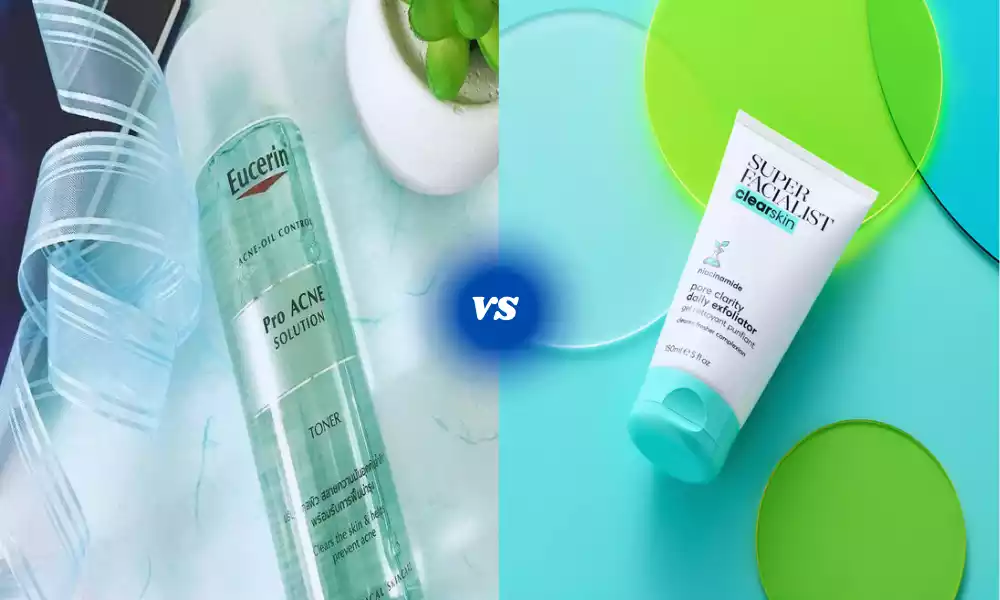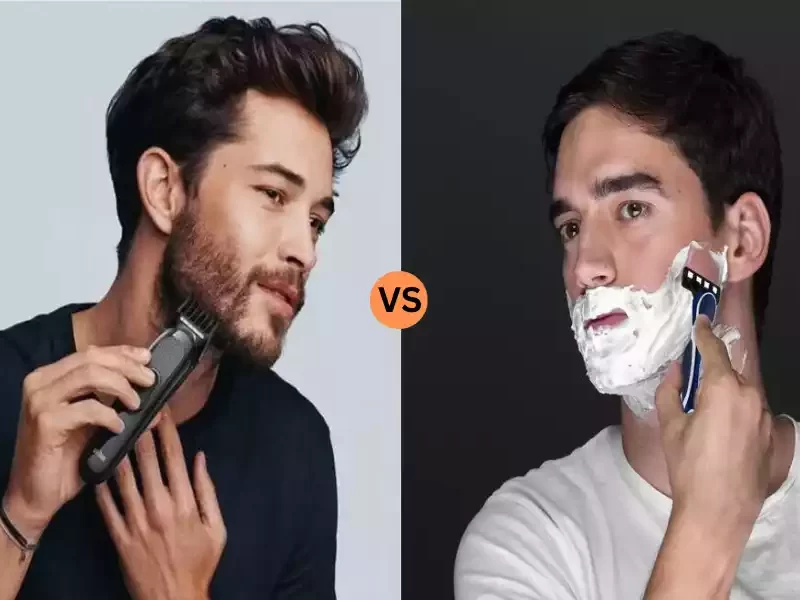Toner and Exfoliator are two essential components of a skincare routine, each serving distinct purposes. Toner is a water-based liquid that helps balance the skin’s pH levels, provides hydration, and prepares the skin for other skincare products. On the other hand, an exfoliator, available in physical or chemical forms, is designed to remove dead skin cells, unclog pores, and stimulate skin cell turnover. Understanding the differences and how to use these products is crucial for maintaining healthy and radiant skin.
What is a Toner?
A toner is a skincare product typically in liquid form, used as part of a skincare routine after cleansing the face. It is designed to balance the skin’s pH levels, provide hydration, and prepare the skin for the application of other skincare products. Toners can come in various formulations, including hydrating toners that focus on moisturizing the skin and astringent toners that help tighten pores.
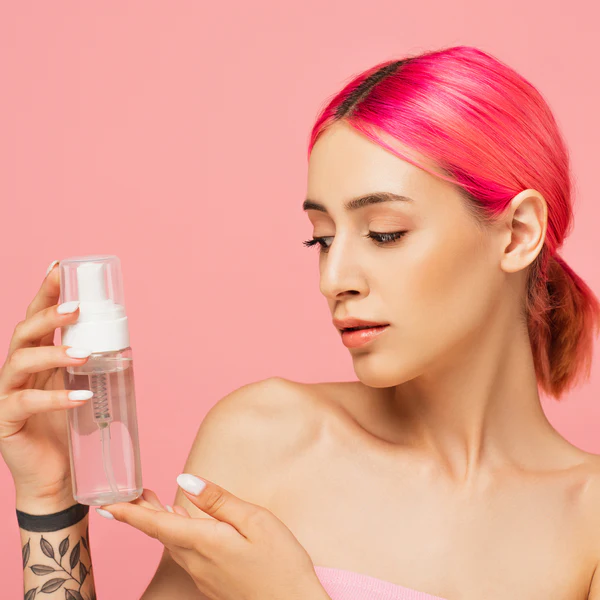
They are applied to the skin using a cotton pad or by gently patting it onto the face, and they serve to refresh and revitalize the skin while removing any remaining impurities or cleanser residue.
Types of Toners
There are several types of toners available in the skincare market, each formulated to address specific skin concerns. Here are some common types of toners:
- Hydrating Toners: These toners are designed to provide extra moisture to the skin. They often contain ingredients like hyaluronic acid, glycerin, or aloe vera to hydrate and soothe dry or dehydrated skin.
- Astringent Toners: Astringent toners are formulated to tighten the skin and minimize the appearance of pores. They often contain alcohol or witch hazel and are suitable for those with oily or acne-prone skin.
- Exfoliating Toners: These toners contain ingredients like alpha hydroxy acids (AHAs) or beta hydroxy acids (BHAs) to help exfoliate the skin by removing dead skin cells. They can improve skin texture and tone and are beneficial for those with dull or congested skin.
- Balancing Toners: These toners aim to balance the skin’s pH levels. They are generally alcohol-free and help maintain the skin’s natural pH, making them suitable for most skin types.
- Antioxidant Toners: Antioxidant-rich toners often contain vitamins like C and E, green tea extract, or other antioxidants. They help protect the skin from environmental damage and may promote a more youthful complexion.
- Calming or Soothing Toners: These toners are formulated with ingredients like chamomile, calendula, or centella asiatica to soothe and reduce redness in sensitive or irritated skin.
- Brightening Toners: Brightening toners typically contain ingredients like niacinamide or licorice root extract, which can help fade dark spots, even out skin tone, and promote a brighter complexion.
- Acne-fighting Toners: Toners with acne-fighting ingredients like salicylic acid are designed to target and prevent breakouts. They can be useful for individuals with acne-prone skin.
- Essence Toners: These toners are thicker in consistency and often contain more concentrated active ingredients to provide added benefits. They are common in Korean skincare routines and can address various skin concerns, such as hydration, anti-aging, or brightening.
When choosing a toner, it’s essential to consider your skin type and specific skincare goals. It’s also a good practice to patch test new products to ensure they are compatible with your skin and do not cause any adverse reactions.
Benefits of Using a Toner
Using a toner as part of your skincare routine can offer several benefits for your skin.
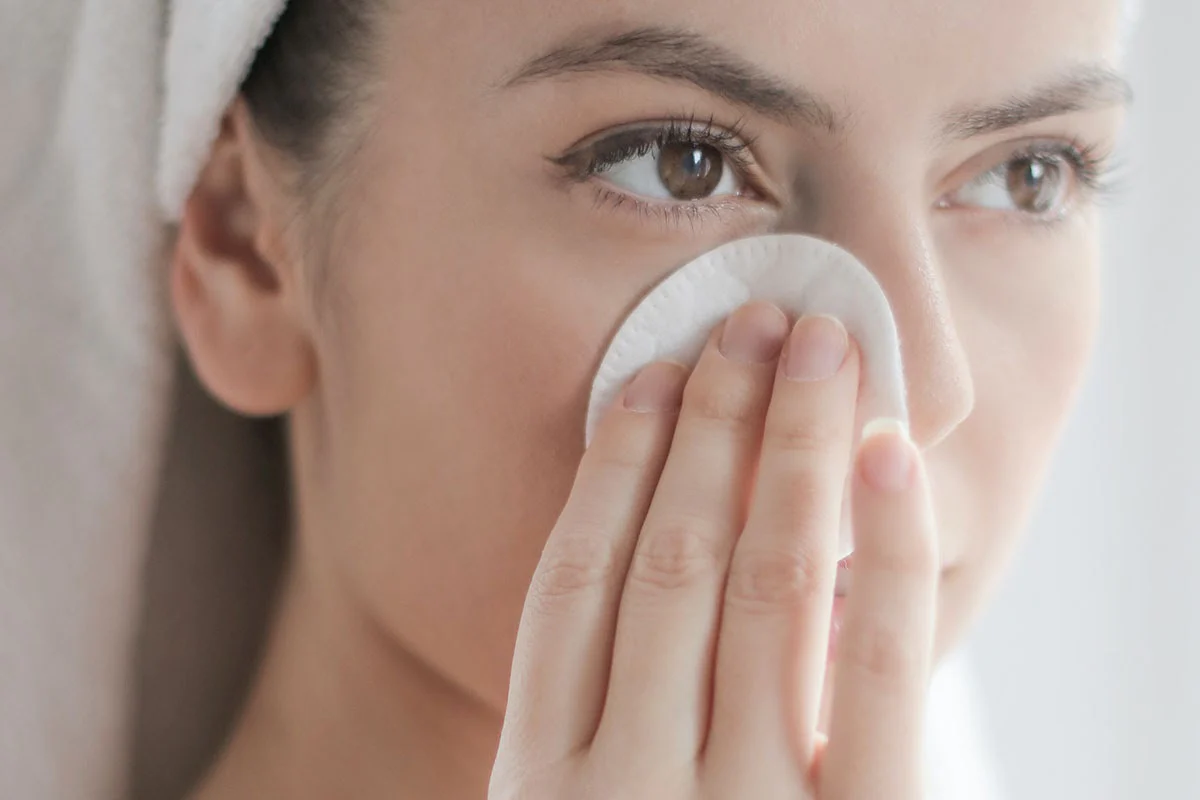
Here are some of the advantages of incorporating a toner into your daily regimen:
-
- Balancing pH Levels: Toners help restore the skin’s natural pH balance, which can be disrupted by cleansing. Balanced pH levels are essential for healthy skin function and can prevent issues like excess oil production or dryness.
- Hydration: Many toners contain hydrating ingredients like glycerin, hyaluronic acid, or aloe vera, which provide an extra layer of moisture to the skin. This can be particularly helpful to those suffering from dry or dehydrated skin.
- Cleansing Residue Removal: Toners can effectively remove any remaining traces of makeup, dirt, or cleanser residue from the skin, ensuring that your pores are clean and reducing the risk of clogged pores and breakouts.
- Pore Tightening: Astringent toners can temporarily tighten the skin and minimize the appearance of pores, which can give the skin a smoother and more refined texture.
- Exfoliation: Some toners, known as exfoliating toners, contain ingredients like alpha hydroxy acids (AHAs) or beta hydroxy acids (BHAs) that help gently exfoliate the skin. This process can remove dead skin cells, improve skin texture, and promote cell turnover.
- Preparation for Other Products: Applying toner before serums, moisturizers, or treatments can help these products absorb more effectively into the skin. Make the most out of your daily skincare regime to reap maximum benefit.
- Refreshment and Soothing: Many toners have a refreshing and soothing effect on the skin. This can be particularly helpful for sensitive or irritated skin, as toners with calming ingredients can reduce redness and discomfort.
- Antioxidant Protection: Some toners contain antioxidants like vitamin C or green tea extract, which can provide additional protection against environmental damage, such as UV rays and pollution.
- Brightening and Even Skin Tone: Brightening toners with ingredients like niacinamide or licorice root extract can help fade dark spots, improve skin tone, and promote a more radiant complexion.
- Acne Control: For those with acne-prone skin, toners containing acne-fighting ingredients like salicylic acid can help prevent and treat breakouts by unclogging pores and reducing inflammation.
Toners offer the same benefits, as their formulations can vary widely. When choosing a toner, consider your skin type and specific skincare goals, and look for a product that aligns with your needs. Additionally, be mindful of any potential irritants or allergens in the ingredients list, and perform a patch test if you have sensitive skin.
What is an Exfoliator?
An exfoliator is a skincare product or technique designed to remove dead skin cells from the surface of the skin. This process of exfoliation is crucial for maintaining healthy, vibrant skin. Exfoliators work by either physically scrubbing away dead cells using abrasive particles or chemically dissolving them with acids or enzymes. By eliminating these dead cells, exfoliation reveals fresh, more youthful skin underneath, promotes a smoother skin texture, unclogs pores, and stimulates the natural turnover of skin cells.
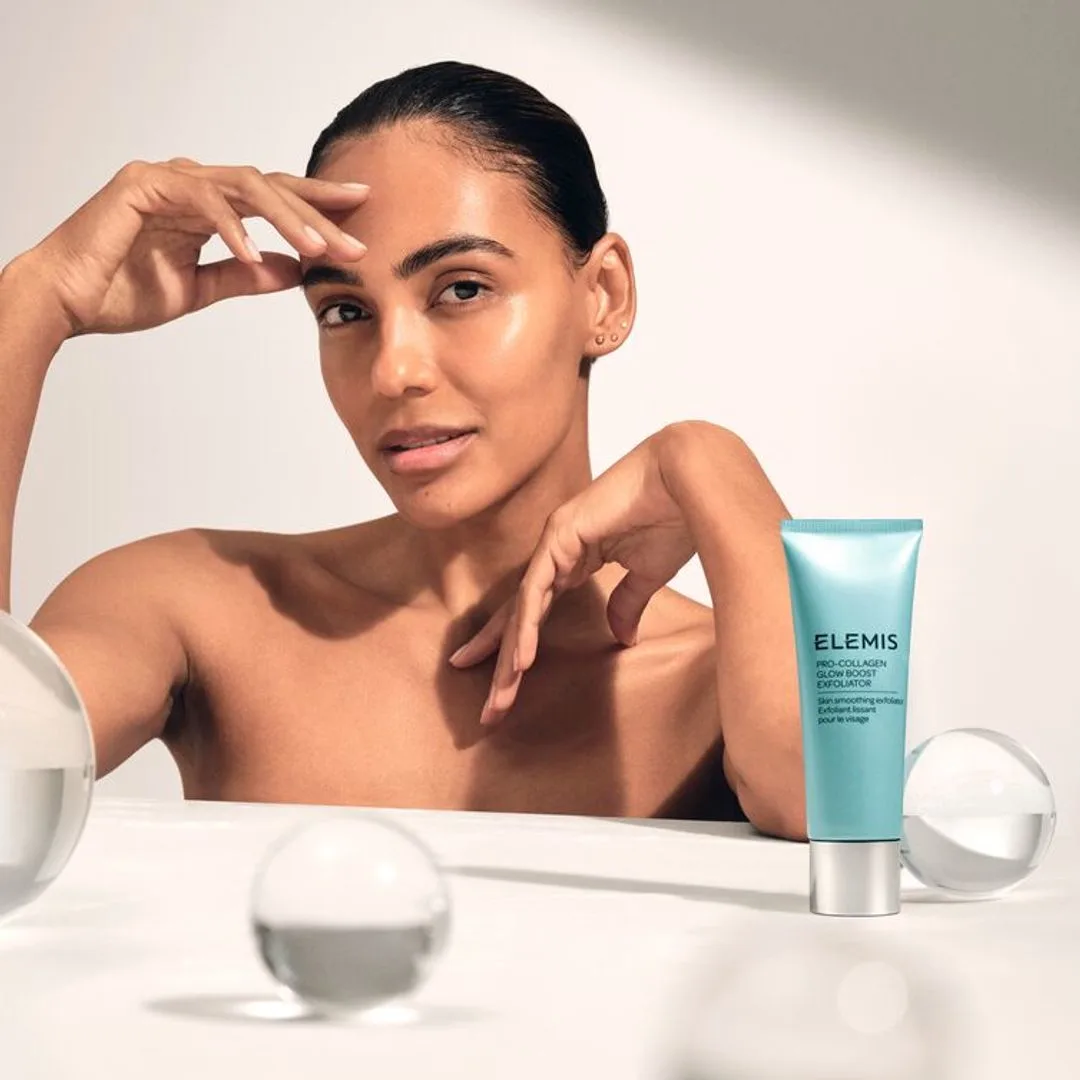
There are different types of exfoliators, including physical exfoliants like scrubs and brushes, as well as chemical exfoliants like alpha hydroxy acids (AHAs) and beta hydroxy acids (BHAs), each catering to specific skin types and concerns. Proper exfoliation can enhance skin clarity and radiance, but it’s essential to exfoliate in moderation and choose the right product for your skin type to avoid over-exfoliation and irritation.
Types of Exfoliators
Exfoliators come in various types, each with its own method of removing dead skin cells and addressing specific skin concerns. Here are some common types of exfoliators:
- Physical Exfoliators: These contain small abrasive particles that physically scrub away dead skin cells when massaged onto the skin’s surface. Common physical exfoliants include:
- Facial Scrubs: These typically contain ingredients like sugar, salt, or ground nuts to provide gentle physical exfoliation.
- Exfoliating Brushes or Sponges: These tools are used to manually buff away dead skin cells.
- Chemical Exfoliators: Chemical exfoliators use acids or enzymes to dissolve dead skin cells and are often more effective and less abrasive than physical exfoliants. Chemical exfoliants come in two primary varieties.
- Alpha Hydroxy Acids (AHAs): AHAs, such as glycolic acid and lactic acid, are water-soluble acids that work on the skin’s surface. They are effective at improving skin texture and addressing issues like uneven pigmentation and fine lines.
- Beta Hydroxy Acids (BHAs): BHAs, like salicylic acid, are oil-soluble acids that can penetrate deeper into the pores. They are particularly useful for oily and acne-prone skin as they can help unclog pores and reduce inflammation.
- Enzyme Exfoliators: These contain natural enzymes, often derived from fruits like papaya or pineapple, which break down and dissolve dead skin cells without scrubbing. Enzyme exfoliators are usually gentle and suitable for sensitive skin.
- Chemical Peels: These are more intensive chemical exfoliation treatments administered by skincare professionals. They can address various skin concerns, such as fine lines, acne scars, and hyperpigmentation, but they require careful application and may have downtime associated with them.
- Microdermabrasion: This is a mechanical exfoliation method performed with a machine that sprays tiny crystals onto the skin’s surface and then vacuums them away along with dead skin cells. It’s typically done in a spa or dermatologist’s office.
- Exfoliating Masks: These are leave-on masks formulated with exfoliating ingredients like AHAs, BHAs, or enzymes. They provide a more extended exfoliation period compared to cleansers or scrubs.
- At-Home Peeling Pads: These are pre-soaked pads or wipes saturated with exfoliating solutions like AHAs or BHAs, making them convenient for use at home.
The choice of exfoliator depends on your skin type, sensitivity, and specific skincare goals. It’s essential to follow product instructions, be mindful of how often you exfoliate, and introduce exfoliants gradually to prevent over-exfoliation and skin irritation. Consulting with a dermatologist or skincare professional can help you select the most suitable exfoliation method for your skin.
Benefits of Exfoliating
Exfoliating your skin regularly offers a range of benefits that can contribute to healthier, clearer, and more radiant skin.
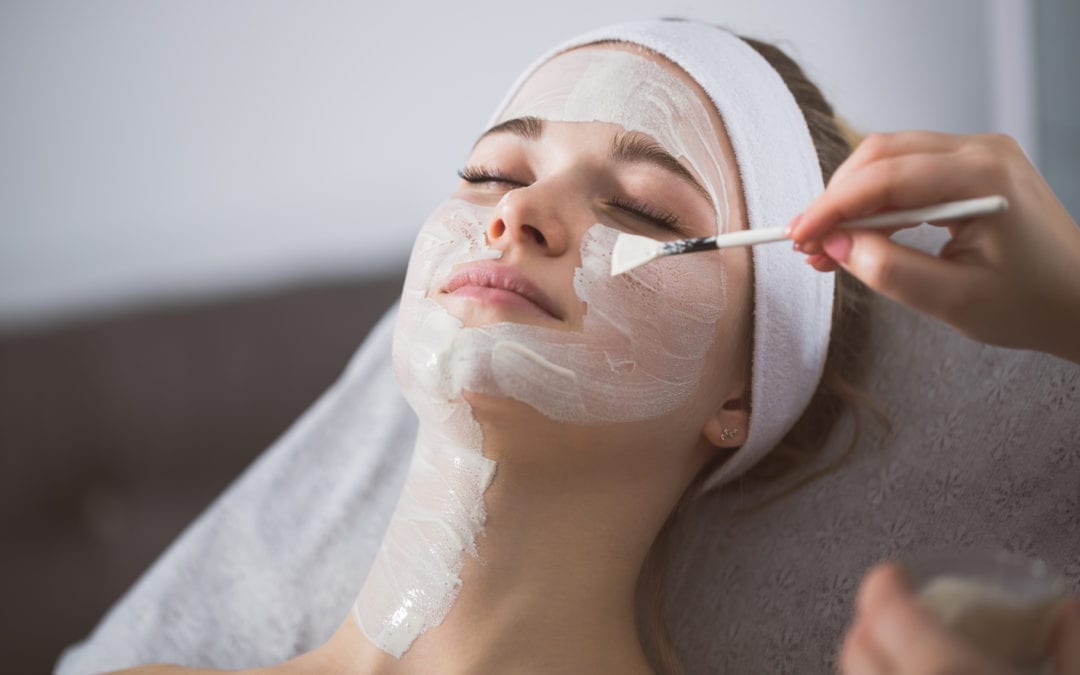
Here are some of the key advantages of incorporating exfoliation into your skincare routine:
-
- Removal of Dead Skin Cells: Exfoliation effectively removes the top layer of dead skin cells from the skin’s surface. This process reveals fresher, healthier skin underneath, resulting in a smoother and more vibrant complexion.
- Improved Skin Texture: Regular exfoliation can lead to smoother and softer skin. It helps reduce rough patches, fine lines, and uneven texture, giving your skin a more refined appearance.
- Unclogging Pores: Exfoliation helps prevent and treat clogged pores by removing the buildup of oil, debris, and dead skin cells. This may help decrease the occurrence of whiteheads and blackheads.
- Enhanced Absorption of Skincare Products: After exfoliation, your skin is better prepared to absorb other skincare products, such as serums, moisturizers, and treatments. Advantages provided by these goods are maximized.
- Promotion of Cell Turnover: Exfoliation stimulates the natural process of skin cell turnover, where old skin cells are replaced with new ones. Achiering this effect may result in an overall younger and fresher appearance.
- Brighter Skin: Exfoliating can help fade dark spots, pigmentation, and sun damage, resulting in a brighter and more even skin tone.
- Acne Prevention and Treatment: Exfoliation, especially with salicylic acid (a BHA), can help control acne by keeping pores clear and reducing inflammation.
- Smoother Shave: Exfoliating before shaving can help prevent ingrown hairs and provide a closer, smoother shave.
- Stress Relief and Relaxation: The process of exfoliating can be a soothing and relaxing part of your self-care routine, promoting mental well-being.
- Improved Product Penetration: Exfoliating allows skincare products to penetrate deeper into the skin, making them more effective.
While exfoliation can provide numerous benefits, over-exfoliating or using harsh exfoliants too frequently can lead to skin irritation and damage. The frequency and type of exfoliation should be tailored to your skin type and sensitivity. Always follow product instructions, and consider consulting with a dermatologist or skincare professional for personalized recommendations.
Comparison Table of Toner and Exfoliator
Here’s a comparison table highlighting the key differences between toners and exfoliators:
| Aspect | Toner | Exfoliator |
|---|---|---|
| Primary Purpose | Balancing pH, hydrating, and preparing the skin for other products. | Dead skin cell removal, unclogging pores and stimulating cell turnover. |
| Composition | Typically water-based liquid. | Can be physical (containing scrubbing particles) or chemical (using acids/enzymes). |
| Frequency of Use | Often used daily, sometimes twice a day. | Typically used 1-3 times a week, depending on skin type and product. |
| Application Method | Applied with a cotton pad or palms, gently patted onto the skin. | Applied by massaging onto the skin, avoiding sensitive areas. |
| Skin Concerns Addressed | Balancing, hydration, and cleansing. | Removing dead skin, improving texture, reducing acne, and brightening. |
| Types | Hydrating, astringent, exfoliating, antioxidant, calming, brightening, etc. | Physical, chemical (AHAs, BHAs), enzyme-based, microdermabrasion, etc. |
| Suitable Skin Types | Various options for different skin types. | Options for various skin types, depending on the product. |
| Risk of Irritation | Generally less likely to cause irritation, but it depends on the ingredients. | Can potentially cause irritation if not used correctly or if overused. |
| Precautions | Patch testing is recommended for new products. | Important to follow product instructions and not over-exfoliate. |
| Role in Skincare Routine | Prep and maintenance step, used after cleansing and before serums/moisturizers. | Treatment step, typically used after cleansing and before other treatments or moisturizers. |
Remember that choosing the right product and using it according to your skin type and specific concerns is essential for achieving the best results while minimizing the risk of irritation or other adverse effects.
Incorporating Toners and Exfoliators into Your Routine
Incorporating toners and exfoliators into your skincare routine requires careful consideration of your skin type, concerns, and the specific products you’re using. Here’s a step-by-step guide on how to include these products effectively:
1. Cleansing: Start off by using a gentle cleanser that can effectively rid your face of dirt, makeup and other impurities. Use lukewarm water and avoid hot water, which can strip the skin of natural oils.
2. Toner:
- Morning: Apply a toner with hydrating or antioxidant properties using a cotton pad or by gently patting it onto your face. This helps balance pH levels and provides a fresh canvas for subsequent products.
- Evening: Follow the same routine as in the morning unless you’re using an exfoliating toner (see step 4).
3. Serums and Treatments: Apply serums or treatments targeting specific concerns such as anti-aging, brightening, or acne. These products should be applied after your toner and before your moisturizer.
4. Exfoliation (as needed):
- Frequency: Exfoliate 1-3 times a week, depending on your skin type and the product’s instructions. Avoid over-exfoliating.
- Physical Exfoliators: Use a scrub or exfoliating brush as directed. Gently massage in a circular motion, concentrating on areas with rough or uneven texture.
- Chemical Exfoliators: Apply chemical exfoliants (AHAs, BHAs) according to the product’s directions. Typically, these are used after cleansing and before other treatments.
5. Moisturizer: Apply a suitable moisturizer to lock in hydration and maintain the skin’s moisture balance.
6. Sunscreen (Morning Routine): Finish your morning routine with a broad-spectrum sunscreen with at least SPF 30. Sun protection is crucial to prevent UV damage and protect the skin from further harm, especially when using exfoliating products.
7. Night Cream (Evening Routine): In the evening, you can use a richer night cream or sleeping mask to provide extra hydration and repair the skin while you sleep.
8. Extras (Optional): Depending on your needs and preferences, you can add other products like eye creams, spot treatments, or masks at this stage.
9. Consistency: Consistency is key in skincare. Stick to your routine for several weeks to see noticeable improvements in your skin. Be patient, as it may take time for the benefits of exfoliation or other treatments to become evident.
10. Adjust as Needed: Pay attention to how your skin responds to each product. If you experience irritation or discomfort, consider adjusting the frequency or type of product. Consult with a dermatologist or skincare professional for personalized recommendations if necessary.
Remember that the order of product application is essential to ensure each product can penetrate the skin effectively. Additionally, listen to your skin’s needs and adjust your routine as necessary, especially if your skin type or concerns change over time.
Common Mistakes to Avoid
To achieve the best results and maintain healthy skin when incorporating toners and exfoliators into your skincare routine, it’s essential to avoid common mistakes. Here are a few potential traps you should try and avoid:
-
- Over-Exfoliating: One of the most significant mistakes is using exfoliators too frequently or using multiple exfoliating products simultaneously. Over-exfoliating can lead to skin irritation, dryness, sensitivity, and even breakouts. Follow the recommended frequency for your chosen exfoliator and be mindful of how your skin responds.
- Not Patch Testing: Before applying a new toner or exfoliator to your entire face, it’s a good practice to patch test the product on a small area of your skin to check for any adverse reactions or allergies.
- Ignoring Skin Type: Not all toners and exfoliators are suitable for every skin type. It’s crucial to choose products that cater to your specific skin type (e.g., dry, oily, sensitive, combination) and concerns (e.g., acne, aging, pigmentation).
- Using Harsh Ingredients: Avoid toners or exfoliators with harsh or potentially irritating ingredients, especially if you have sensitive skin. Look for gentle formulations and consult with a dermatologist if you have concerns about specific ingredients.
- Skipping Sunscreen: After exfoliation, your skin is more sensitive to UV damage. Skipping sunscreen can lead to increased sunburn risk, skin aging, and pigmentation issues. Always apply sunscreen during the day, even on cloudy days.
- Mixing Incompatible Products: Be cautious when combining multiple active ingredients, such as using multiple exfoliants or potent treatments at the same time. Certain combinations can lead to skin irritation or reduce the effectiveness of the products.
- Inconsistent Routine: Skincare requires consistency. Skipping steps or using products sporadically can hinder results. Stick to your routine to see improvements over time.
- Neglecting Hydration: Exfoliating and toning can sometimes strip the skin of natural oils. Ensure you use a suitable moisturizer to maintain your skin’s hydration and balance.
- Rubbing or Aggressive Application: Be gentle when applying toners or exfoliators. Rubbing or scrubbing the skin too vigorously can cause irritation and damage the skin’s protective barrier.
- Not Consulting a Professional: If you have specific skin concerns, persistent issues, or are unsure about which products to use, consult a dermatologist or skincare professional. They will provide you with personalized suggestions and advice.
- Neglecting Other Aspects of Skincare: Remember that skincare isn’t just about toners and exfoliators. A well-rounded routine includes cleansing, moisturizing, sun protection, and sometimes specialized treatments based on your needs.
- Not Adhering to Product Instructions: Always follow the instructions provided on the product labels. Different products have varying application techniques and recommended frequencies.
By avoiding these common mistakes and tailoring your skincare routine to your unique needs and concerns, you can achieve the best results and maintain healthy, radiant skin.
Conclusion
Toners and Exfoliators are valuable additions to a skincare routine, each serving distinct purposes. Toners help balance pH levels, provide hydration, and prepare the skin for further products, while exfoliators remove dead skin cells, unclog pores, and stimulate skin renewal. When used correctly and tailored to your skin type and concerns, these products can contribute to healthier, smoother, and more radiant skin. It’s essential to be mindful of potential pitfalls such as overuse, harsh ingredients, or neglecting sunscreen, to ensure the best outcomes and maintain optimal skin health.

